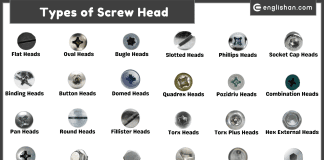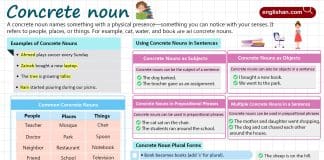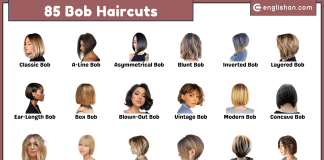Contents
A tooth is a hard, mineralized structure found in the mouths of humans and many animals. In humans, teeth are essential for the mechanical breakdown of food during the process of chewing, which is a crucial step in the digestive system. Teeth also play a significant role in speech and aesthetics.
Parts of Tooth
A tooth is a complex structure, and its parts can be categorized into several key components. Here are the main parts of a tooth:
1. Crown:
- Enamel: The outermost and hardest layer, protecting the tooth from wear and tear.
- Dentin: Dense tissue beneath the enamel, providing support and transmitting sensations.
- Pulp Cavity: The innermost part containing nerves, blood vessels, and connective tissue, vital for the tooth’s vitality.
2. Root:
- Cementum: A hard tissue covering the tooth’s root, aiding in attachment to the jawbone.
- Root Canal: A hollow channel within the root containing nerves and blood vessels.
- Apical Foramen: An opening at the tip of the root through which nerves and blood vessels enter and exit.
3. Periodontium:
- Gingiva (Gums): Soft tissues surrounding the tooth, protecting it from external elements.
- Periodontal Ligament: Connective tissue attaching the tooth to the surrounding alveolar bone, providing flexibility.
- Alveolar Bone: The bone surrounding and supporting the tooth sockets.
The Most Common Parts of a Tooth Where Cavities Occur
Cavities, also known as dental caries or tooth decay, can occur in various parts of a tooth. However, some areas are more prone to cavities than others. The most common parts of a tooth where cavities tend to occur are:
1. Pits and Fissures on the Occlusal Surface:
- Location: The chewing surfaces of molars and premolars.
- Reason: These areas have grooves and pits where food particles and bacteria can easily accumulate, making them susceptible to decay.
2. Between Teeth (Interproximal Surfaces):
- Location: The spaces between adjacent teeth.
- Reason: Inadequate cleaning, especially in hard-to-reach areas, allows the accumulation of plaque and bacteria, leading to cavities.
3. Gumline and Root Surfaces:
- Location: The area where the tooth meets the gumline and the exposed root surfaces.
- Reason: Receding gums or improper oral hygiene can expose the tooth’s roots, which are softer than the enamel on the crown, making them more prone to decay.
4. Areas Around Existing Dental Restorations:
- Location: The margins of dental fillings, crowns, or other restorative work.
- Reason: Over time, dental restorations may wear down or develop tiny gaps, providing an entry point for bacteria to cause decay.
5. Deep Grooves and Crevices:
- Location: Deep grooves and crevices on any tooth surface.
- Reason: Some individuals naturally have deeper grooves on their teeth, making these areas more challenging to clean thoroughly.
What are Fracture Lines?
Fracture lines refer to the lines or patterns that appear on a material or object when it experiences a break or fracture. These lines are visible indicators of the direction and nature of the forces that caused the break. Fracture lines can be found in various materials, including rocks, glass, ceramics, and even biological materials like bones.
The characteristics of fracture lines can provide valuable information about the type of force or stress that led to the break. Different types of fractures include:
1. Cleavage Fractures: These fractures occur along planes of structural weakness within a material. The break is often smooth and flat, and the fracture lines follow specific crystallographic planes in minerals.
2. Conchoidal Fractures: These fractures result in smooth, curved surfaces resembling the interior of a seashell. Conchoidal fractures are often associated with brittle materials like glass or certain minerals and occur due to rapid, uneven stresses.
3. Radial Fractures: Radial lines extend outward from a central point of impact. This pattern is commonly seen in materials like glass when a force is applied at a single point.
4. Tensile Fractures: These occur when a material is subjected to tensile (pulling or stretching) forces. Tensile fractures often exhibit elongated, fibrous patterns.
5. Compressive Fractures: These occur when a material is subjected to compressive (squeezing or crushing) forces. The fracture lines may appear as crisscrossing patterns.
What Are Types of Tooth?
Humans have different types of teeth, each with a specific shape and function to aid in the chewing and processing of food. The main types of human teeth are:
1. Incisors:
- Location: Found at the front of the mouth.
- Function: Designed for cutting and slicing food.
- Number: Four upper and four lower incisors (two central and two lateral incisors on each side).
2. Canines (Cuspids):
- Location: Pointed teeth next to the incisors.
- Function: Used for tearing and gripping food.
- Number: Four canines (two upper and two lower).
3. Premolars (Bicuspids):
- Location: Behind the canines.
- Function: Have flat surfaces with small ridges, suitable for grinding and tearing.
- Number: Eight premolars (four upper and four lower).
4. Molars:
- Location: Situated at the back of the mouth.
- Function: Large, flat surfaces for grinding and crushing food.
- Number: Twelve molars (six upper and six lower, including the third molars or wisdom teeth).
5. Wisdom Teeth (Third Molars):
- Location: The last set of molars at the back of the mouth.
- Function: Historically thought to assist in grinding plant tissue, but they are often extracted due to issues like impaction and crowding.
Care
Taking care of your teeth involves several important practices to maintain good oral health. Here’s a concise guide on how to care for your teeth:
1. Brushing:
- Frequency: Brush your teeth at least twice a day, preferably in the morning and before bedtime.
- Technique: Use a soft-bristled toothbrush and fluoride toothpaste. Brush in circular motions for about two minutes to clean all tooth surfaces.
2. Flossing:
- Frequency: Floss once a day to remove plaque and food particles from between your teeth.
- Technique: Gently slide the floss between your teeth, curving it around each tooth in a C-shape.
3. Diet:
- Limit Sugary Foods: Minimize sugary and acidic foods and beverages, as they can contribute to tooth decay.
- Balanced Diet: Eat a well-balanced diet with fruits, vegetables, whole grains, and lean proteins.
4. Regular Dental Check-ups:
- Frequency: Visit your dentist for regular check-ups and cleanings, typically every six months.
- Early Detection: Regular check-ups help identify and address dental issues early on.
5. Fluoride:
- Use toothpaste and mouthwash that contain fluoride to strengthen tooth enamel and prevent cavities.
6. Avoid Tobacco:
- Quit smoking and avoid tobacco products, as they can contribute to gum disease and oral cancers.
7. Protect Your Teeth:
- Wear a mouthguard when engaging in contact sports or activities with a risk of dental injury.
8. Stay Hydrated:
- Drink plenty of water throughout the day to help maintain saliva production, which aids in oral health.
9. Replace Your Toothbrush:
- Change your toothbrush or toothbrush head every three to four months or sooner if the bristles are frayed.
10. Emergency Care:
- If you experience tooth pain, sensitivity, or other issues, consult your dentist promptly.
Functions of Tooth
The functions of teeth are crucial for various aspects of human health, particularly in the process of digestion and overall well-being. Here are the primary functions :
Chewing and Grinding:
- Function: The main purpose is to break down food into smaller, more manageable pieces through chewing and grinding.
- Significance: This process initiates the mechanical breakdown of food, making it easier to swallow and facilitating digestion.
Speech and Articulation:
- Function: Teeth play a role in speech and articulation by assisting in the formation of sounds and words.
- Significance: Properly aligned and functioning teeth contribute to clear and effective communication.
Aesthetics and Facial Support:
- Function: Teeth contribute to the aesthetics of the face, providing support to the lips and cheeks.
- Significance: Well-maintained teeth and a healthy smile can enhance facial appearance and self-confidence.
Digestive System Support:
- Function: The mechanical breakdown of food by teeth initiates the digestive process.
- Significance: Smaller food particles make it easier for digestive enzymes in the stomach and small intestine to break down and absorb nutrients.
Maintaining Jaw Structure:
- Function: The presence of teeth helps maintain the structure and integrity of the jawbone.
- Significance: Chewing and biting stimulate the jawbone, preventing bone loss and maintaining facial contours.
Development of Proper Bite:
- Function: The alignment of teeth contributes to the development of a proper bite.
- Significance: A correct bite ensures efficient chewing, minimizes the risk of jaw-related issues, and supports overall oral health.
Supporting Facial Muscles:
- Function: Provide support to facial muscles, aiding in facial expressions and movement.
- Significance: Well-supported facial muscles contribute to a healthy and expressive face.
Space Maintenance:
- Function: Teeth help maintain proper spacing in the oral cavity.
- Significance: Proper spacing is essential for the alignment of teeth, preventing crowding or misalignment issues.
Common Mistakes
Here are some common mistakes or misconceptions related to tooth health:
1. Inadequate Brushing Technique:
- Mistake: Brushing too hard or using an improper technique can lead to enamel wear and gum recession.
- Correction: Use a soft-bristled toothbrush and gentle, circular motions to clean all tooth surfaces.
2. Neglecting Flossing:
- Mistake: Neglecting to floss can leave plaque and debris between teeth, contributing to cavities and gum disease.
- Correction: Floss daily to clean between teeth where a toothbrush may not reach.
3. Not Using Fluoride:
- Mistake: Avoiding fluoride-containing toothpaste may increase the risk of cavities.
- Correction: Use toothpaste with fluoride to strengthen tooth enamel and prevent decay.
4. Overlooking Regular Dental Check-ups:
- Mistake: Skipping dental check-ups can lead to undetected issues and more significant problems over time.
- Correction: Schedule regular dental check-ups and cleanings to catch issues early.
5. Ignoring Diet and Nutrition:
- Mistake: Consuming excessive sugary or acidic foods can contribute to tooth decay.
- Correction: Maintain a balanced diet, limit sugary snacks, and drink water to promote oral health.
6. Using Teeth as Tools:
- Mistake: Using teeth to open packages or bite on hard objects can lead to fractures or damage.
- Correction: Use tools designed for specific tasks and avoid using teeth for non-chewing purposes.
7. Neglecting Gum Health:
- Mistake: Focusing solely on teeth and neglecting gum health can lead to gingivitis or periodontal disease.
- Correction: Brush your gums gently and include them in your oral care routine.
8. Smoking and Tobacco Use:
- Mistake: Smoking and using tobacco products can contribute to gum disease and oral cancers.
- Correction: Quit smoking and avoid tobacco for better overall oral health.
Quiz:
1. What is the outermost and hardest layer of a tooth?
- a) Dentin
- b) Enamel
2. Which part of the tooth contains nerves, blood vessels, and connective tissues?
- a) Dentin
- b) Pulp Cavity
3. What covers the root surface and helps anchor the tooth in the jawbone?
- a) Cementum
- b) Root Canal
4. Where is the apical foramen located in a tooth?
- a) Crown
- b) Root
5. Which part of the tooth is responsible for sensations and nourishment?
- a) Enamel
- b) Pulp Cavity
6. What is the hollow channel within the root that contains nerves and blood vessels?
- a) Root Canal
- b) Cementum
7. What is the connective tissue that attaches the tooth to the surrounding alveolar bone?
- a) Gingiva (Gums)
- b) Periodontal Ligament
8. Which component surrounds and supports the tooth sockets in the jawbone?
- a) Periodontal Ligament
- b) Alveolar Bone
9. What is the visible part of the tooth above the gumline called?
- a) Root
- b) Crown
10. Which tooth layer is softer than enamel and provides support to the outer layer?
- a) Dentin
- b) Pulp Cavity
11. What is the opening at the tip of the root allowing nerves and blood vessels to pass?
- a) Cementum
- b) Apical Foramen
12. Which part of the tooth is found beneath the enamel and is a hard and protective coating?
- a) Dentin
- b) Enamel
13. What is the primary function of the root canal in?
- a) Anchoring
- b) Housing nerves and blood vessels
Answers:
- b) Enamel
- b) Pulp Cavity
- a) Cementum
- b) Root
- b) Pulp Cavity
- a) Root Canal
- b) Periodontal Ligament
- b) Alveolar Bone
- a) Crown
- a) Dentin
- b) Apical Foramen
- b) Enamel
- b) Housing nerves and blood vessels
FAQs:
1. Q: How often should I brush my teeth?
It is recommended to brush at least twice a day, in the morning and before bedtime.
2. Q: What type of toothbrush should I use?
A soft-bristled toothbrush is recommended to avoid causing damage to the enamel and gums.
3. Q: How long should I brush my teeth?
Aim to brush for at least two minutes to ensure thorough cleaning.
4. Q: Is flossing important, and how often should I do it?
Yes, flossing is crucial. Floss once a day to remove plaque and debris from between teeth.
5. Q: When should my child first see a dentist?
The American Academy of Pediatric Dentistry recommends a child’s first dental visit by their first birthday or when their first tooth emerges.
6. Q: How often should I have a dental check-up?
Regular dental check-ups are typically recommended every six months, but the frequency may vary based on individual oral health needs.
7. Q: What is the best toothpaste to use?
Choose a fluoride toothpaste to help prevent cavities and strengthen tooth enamel.
Read More








